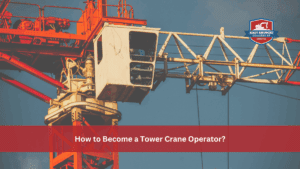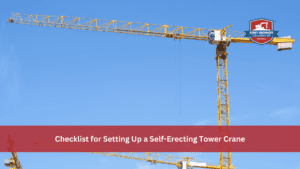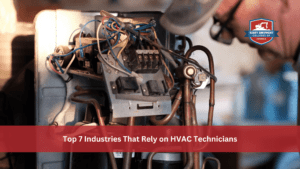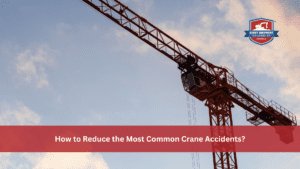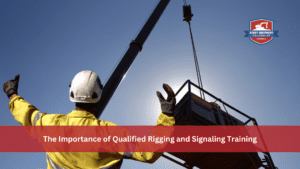Bulldozers are primarily used for moving or removing heavy materials from an area. They are primarily found in construction sites, farms, and similar settings. Interestingly enough, bulldozers are technically classified as a tractor. What separates a typical farm tractor from a bulldozer is that a bulldozer has a large metal plate in the front for pushing or carrying materials.
While bulldozers are capable of immense power, they also present an immediate danger if used improperly. You should only operate a bulldozer if you have the proper training and qualifications. Don’t let the requirements and danger keep you from entering this growing field. Here is an essential breakdown of bulldozers, their functions, and how you can become a bulldozer operator.
Uses and Benefits of Bulldozers
Bulldozers are capable of a variety of transporting and removal actions. One of the most common uses for bulldozers is demolition, although destruction is not its only purpose. You can also find bulldozers digging into the earth to remove sand, dirt, or practically anything in its way. Additionally, bulldozers are often used for new road construction. Before a new road can be paved, a bulldozer will strip, clear, and level where the new pavement or coverage will go.
With so many ways to use a bulldozer, you can clearly see why they are so beneficial for construction and debris removal. They make the job easier for crews trying to work efficiently, despite the design for them being virtually unchanged since its first inception. That doesn’t mean these machines are perfect or immune to change. In fact, the first remote-operated bulldozers have entered the market giving operators the chance to use the machine from a safe distance.
Types, Parts, and Their Functions
There are three main types of bulldozers available, each designed for a specific purpose or function. The list includes Crawler Bulldozers, Wheel Bulldozers, and Mini Bulldozers. Here is a breakdown of each type and what setting they are best utilized in.
Crawler Bulldozer
Crawlers are sometimes referred to as track bulldozers, likely because they resemble a tractor the most. They are mainly used for transporting heavy materials over rough and difficult terrain.
Wheel Bulldozer
Wheel bulldozers are often referred to as tire bulldozers and they are typically bigger than crawler bulldozers. The tires on this machine give it better traction and handling giving it better maneuverability.
Mini Bulldozer
Sometimes referred to as compact bulldozers, mini bulldozers have better maneuverability and versatility than the above types. Due to their compact size, these machines are great for clearing lots and grading.
Parts of a Bulldozer
Each of the above types of bulldozers serves a similar purpose in different capacities. Regardless of the type of bulldozer, you may be using, they all have essentially the same parts. Below is a breakdown of the main parts of a bulldozer and their functions.
Ripper
Located at the rear of the bulldozer, a ripper is used to break up land for agricultural purposes or break down rock and earth for removal.
Final Drive
As the most used and replaced part on a bulldozer, the final drive transfers power from the drive motor to the tracks.
Cab
The cab of a bulldozer is where the operator controls the machine from. The cab keeps the operator safe from debris and sound as they move around the worksite. As a bulldozer safety tip, always monitor the cab to make sure it is reducing sound and absorbing impacts from debris as you work.
Track or Tires
Depending on the type of bulldozer you use, it may come with tracks or tires. Tracks are perfect for navigating difficult terrain while tires are best for soft ground.
Engine
To move heavy debris and to dig up dirt and sand, a bulldozer needs a high-powered engine. Different engines are used to fulfill specific needs, such as producing fewer emissions.
Push Frame
The push frame of a bulldozer is the part that moves the blade.
Blade
A bulldozer’s blade is a metal plate located at the front of the machine. It’s used for pushing debris and digging, depending on the type of blade attached.
Why Choose a Career in Heavy Equipment?
Bulldozer Safety Guidelines
As mentioned before, bulldozers are large, powerful machines that are mainly used for demolition purposes. The person responsible for operating it must be well trained and qualified to do so. Otherwise, one false move or negligent mistake could result in major damages. Here are a handful of bulldozer safety tips to help you reduce workplace accidents.
Safety Tip #1
Your first bulldozer safety tip is to always be sure that you or whoever is using the machine is qualified and trained to do so. These machines are safe when used properly, but almost all bulldozer accidents are the result of unqualified or negligent use.
Safety Tip #2
The next safety tip is that operators should always fasten their seatbelts before turning on the engine. The seatbelt will help keep you safe in the case of a rollover. It takes only seconds to ensure you are as safe as possible inside the cab.
Safety Tip #3
The bulldozer operator should always follow proper lockout, blockout, and tagout procedures. This keeps workers on the same page especially when it comes to machines in need of repair.
Safety Tip #4
When a bulldozer is being used in or around public areas, it is imperative that signs and barricades are used to control traffic. This helps reduce accidents near and around roadways. You should also keep an eye on how fast you are moving so that you have time to react to any sudden obstructions.
Safety Tip #5
Bulldozers are large machines, so operators must be aware of their surroundings at all times. Not only should you be checking for things around you but above you as well. Bulldozers should be kept far away from power lines to reduce the chances of an accident.
Safety Tip #6
Before starting the bulldozer, qualified personnel should test the manual warning device, the horn, to ensure that it’s functioning properly. Along with the horn, the back-up alarm should also be tested. It should be heard by all the workers on the site to keep them safe while working near a bulldozer.
Safety Tip #7
When it’s time to refuel your bulldozer, make sure that the engine is shut off first. This helps reduce the chance of accidental fires igniting from gas vapors coming into contact with heat or electricity.
Safety Tip #8
One of the most vital safety measures in a bulldozer is the Rollover Protection Structures, ROPS. These safety mechanisms significantly reduce the chances of serious injury or death in the case of a rollover, especially when paired with the seatbelt.
Safety Tip #9
Every bulldozer comes with hand and foot holds for you to use to climb into the machine’s cab. These holds were specific places in their spots for safety reasons. Avoid climbing on any parts of the machine that do not have these holds.
Safety Tip #10
When operating near trenches or excavation sites, you should be extra cautious. The ground near a trench or excavation site might not be stable, especially for a heavy machine like a bulldozer.
Safety Tip #11
For materials or structures that are taller than the bulldozer itself, make sure you have sufficient overhead protection. Without proper protection, you could risk serious injury from debris falling on top of the bulldozer.
Safety Tip #12
The final bulldozer safety tip is about parking and hauling the machine. If you are parking the bulldozer, do it on a level surface, and make sure you lock it up. For hauling the bulldozer, have a teammate help you to reduce the chances of a tip-over or other accident.
How To Become a Certified Heavy Equipment Operator
Learning or expanding your heavy equipment knowledge can help you start or further your career. Proper training and instruction can mean opening new career opportunities and more pay for yourself.
When you are ready to begin heavy equipment operator training, your first step is to obtain your high school diploma or GED. Next, you should consider the benefits of joining a heavy equipment training program. You can find them at local community colleges, private schools, and technical training schools.
After completing a training program, you should obtain all necessary licenses to operate heavy equipment and machinery. These licenses and certifications may vary by state and local jurisdiction. Finally, once you’ve completed all necessary training and obtain your license to operate, it’s time to hit the job market.
Why Choose Heavy Equipment Colleges of America?
The Heavy Equipment Colleges of America, HEC, helps novice and experienced workers enhance their skills and knowledge of heavy equipment. We can help you choose a career in the heavy equipment industry and provide you with in-class and hands-on training. HEC has multiple locations across the country, so find one near you to begin your journey.
Let HEC Help Pave the Way of Your New Career Path!


